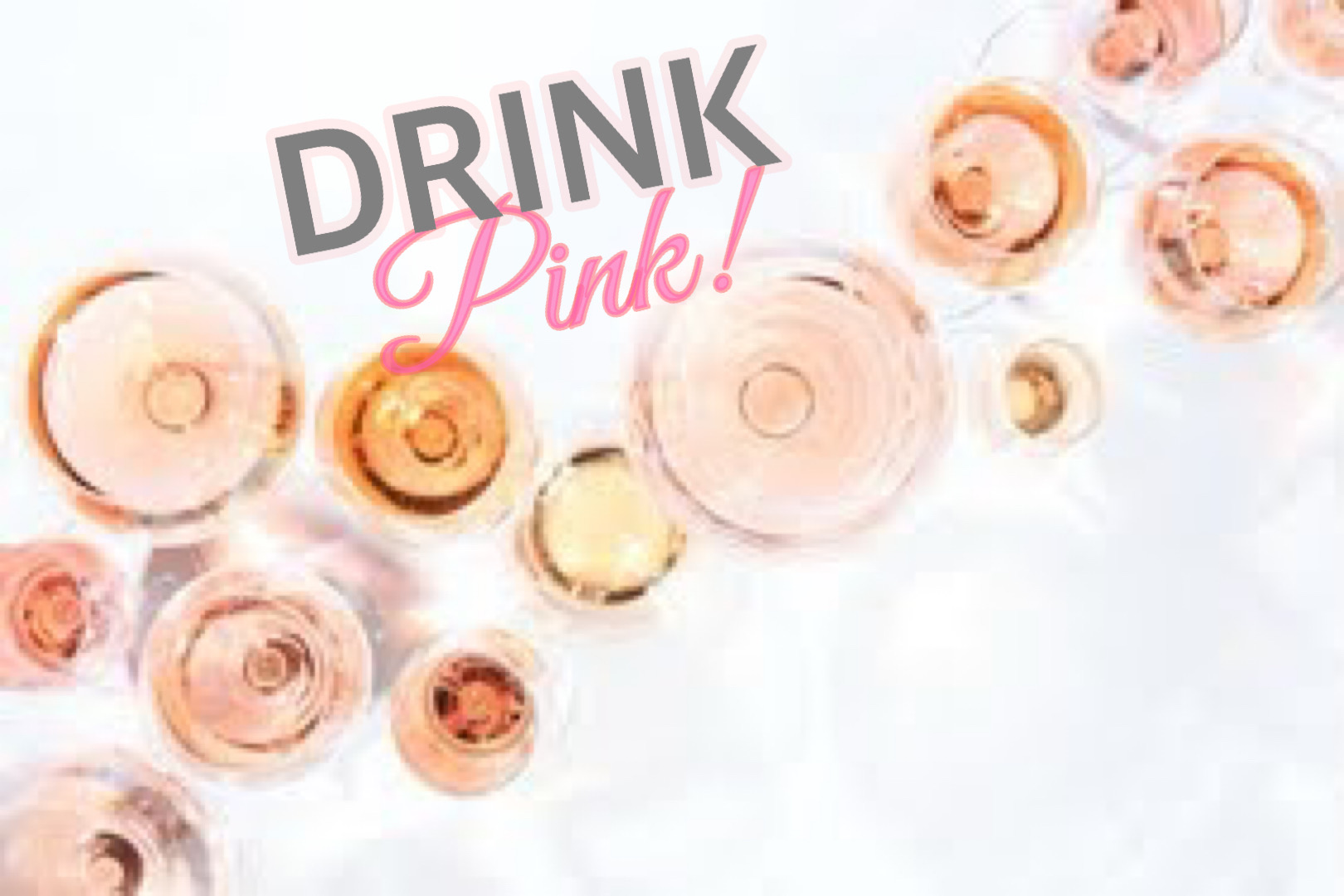The crisp palate pleasing pinks called rosé wine comes in all shades. Why are some pinks more intense, vibrant, darker, lighter, or just different hues? What makes the shade appear so different and does it matter? Those are common questions about rosé wine. We’ll try to make it simple and helpful…
To make rosé wine, red wine grapes are picked and instead of the juice of the grapes sitting with the grape skins for a while to absorb that wonderful red color, the skins are removed within hours. So, yes, that deep red Cabernet Sauvignon you think of drinking with a nice thick steak, can be easily made into a beautiful rosé. And when the wine maker uses a different grape, let’s say Pinot Noir instead of Cabernet Sauvignon, you’ll get a completely different shade of pink for your rosé wine.
Why does it matter what color of rosé you choose? Just like in red wine, the taste profile will change based on the grapes. And just like in red wine, different rosé wine pairs better with different foods. The shades are not completely indicative of the varietal as the winemaker’s choices can also make changes to the shade, but we thought we would give you a general guide of a few types of rosé to get you started pondering your own palate pleasing pinks…
Provence: If you are drinking an extremely light and delicate shade of pink or salmon color you will likely be drinking a Provence rosé, which is a light body dry rosé with typical flavors of berries, watermelon, floral, and sometimes grapefruit and herbs. This rosé is usually a blend of grapes such as Cinsaut, Grenache, Mourvèdre, Syrah, and Cabernet Sauvignon. It’s all about delicacy, so pair this with delicate foods of fruit, cold pasta recipes, charcuterie, and all types of salads.
Pinot Noir: A vibrant light pink rosé of Pinot Noir would also be delicate and similar fruit notes of berries and watermelon to the Provence rosé, with a little more earthiness, less floral notes and sometimes a touch of lime notes. Due to the crisp refreshing taste, the Pinot Noir rosé pairs well with a long day at the lake or pool, friends, as it’s a fun summer wine. Food pairings are an easy match with summer foods, seafood, light pasta, and goat cheese.
Tempranillo: A Tempranillo rosé will be a mixture of both Provence and Pinot Noir in taste and color. It’s a Spanish varietal so think of it as a subtle spicier, like fresh green pepper or peppercorn. For this reason, we like to pair it with tapas, olive tapenade, seafood, salads, or most any Spanish foods that have a touch of spice.
Sangiovese: Sangiovese rosé has more pink undertones than orange. It usually denotes a fruit-forward wine with notes of dark red berries like cherry, cranberry and raspberry. This wine pairs great with prosciutto, fresh seafood, roasted turkey, and brie.
Cabernet Sauvignon: While seldom thought of, Cabernet Sauvignon rosé is quite common for a drier rosé with notes of robust flavors of pomegranate, herbs, tobacco, pepper, and minerality. Lots of tannins can give the rosé more structure and is usually found with more of a pale salmon hue. Speaking of salmon, that’s a great pairing along with watermelon and feta salad and of course, it goes is best enjoyed relaxing on the porch at the end of a hot summer night.
Syrah: And on the darker and fuller scale, Syrah rosé bursts with flavors of purple fruits of plums and blueberries with hints of white pepper and slight smokiness. A great stew, pulled pork sandwich, vegetable linguine, or heartier summer meal would pair great with this heartier rosé.
If you are ready to host your own Rosé Wine Tasting party at We Olive or at your location, give us a call or drop by to pick up a few shades of rosé and a Grazing Box of tapas to pair with all different shades! It’s an easy and fun way of hosting!







Leave a Reply